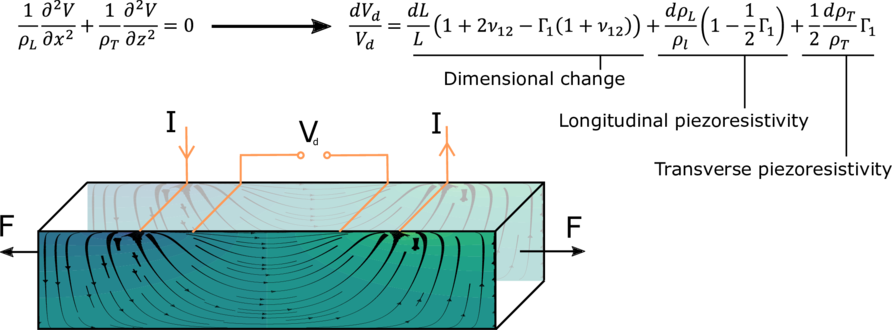This article discusses the main contributing factors for the resistance change of strain sensors with large electrical anisotropy. Typical examples for such a sensor are self sensing applications for carbon fiber reinforced plastics, where the load bearing material itself is used for strain sensing purposes. In many of these applications, electrodes are mounted to the parts surface to act as electrical connection to the conductive fibers. A mathematical approach based on Laplace equation is used to calculate the potential distribution in a two-dimensional rectangle. From this equation, a piezoresistivity theory is derived that takes into account changes in dimensions as well as longitudinal and transverse resistivity. It is shown, that the contribution of each of these factors varies widely between experiments on rather small cross sections and large cross sections. A parameter is derived that can be calculated for a given experiment by measuring the longitudinal and transverse resistivity as well as the geometrical dimensions of the specimen. This parameter is then used to expand a commonly used one-dimensional piezoresistivity theory into a two-dimensional theory, which could proof to be useful in future research analyzing highly anisotropic strain sensors. The developed equations show a good agreement to finite element studies reported in the literature.
P. Scholle, M. Sinapius
Influence of the electrical anisotropy of unidirectional carbon fibre reinforced plastics on their self strain sensing properties
Composites Part C: Open Access, 100256 (2022) [Link]

